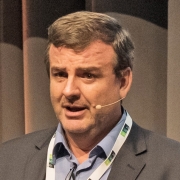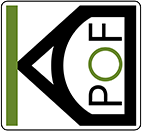With new challenges like automated driving and electric power trains, In-Vehicle Network (IVN) requirements are quickly evolving. The IVN has to support use cases such as the vehicle data backbone, smart antennas, ADAS cameras/sensors, displays, and data loggers, which demand higher data bandwidth while maintaining the reliability level required by the automotive industry. When considering a standard technology to support the target use cases, it is clear that the requirements are not all met by any existing communication standard, including the optical 10GBASE-SR. It is thus necessary to define a new IVN standard for multi-gigabit optical communications in the automotive environment.
Posts
KDPOF congratulates the 802.3cz Task Force for the advance of the proposed IEEE 802.3cz standard to the IEEE 802.3 Working Group ballot stage. “We are happy that the IEEE 802.3 automotive optical multi-gigabit technically complete standard draft has entered the Working Group ballot stage,” stated Carlos Pardo, KDPOF CEO and active participant in the IEEE 802.3 working group. Read more
Report by Soy-de TV – Interview with Carlos Pardo: Soy-de TV talked to our CEO about the semiconductor factory he wants to set up in Tres Cantos. Read more
Tasks and Responsibilities
- Implement ASIC / SoCs / FPGAs for multiple products, starting at the specification & design phase, continuing through technology selection, implementation, and validation. Innovation in performance, power and cost to build the best possible product is a must.
- Participate in all phases of ASIC / FPGA design flow (Synthesis, Place & Route, and Timing Closure) as required.
- Work with backend teams to address any layout and timing issues for ASICs.
- Verification by emulation with FPGAs in the lab.
- Involvement in lead-up, validation, characterization and qualification phases of ASICs.
At the recent CES 2022, Funzin and KDPOF have jointly presented their optical in-vehicle network solution for autonomous vehicles. Funzin, software development and edge AI solution company, have implemented KDPOF’s KD1053 PHY IC and integrated KD9351 FOT (fiber optic transceiver) in the new Funzin AIoT Platform “FAIP 3.0” and Edge AI Device “Photon” for automotive. Read more
Tasks and Responsibilities
- Verify digital logic using SystemVerilog and reusable, standardized methodologies. Verify digital systems that use both custom and standard IP components and interconnects, including microprocessor cores and hierarchical memory subsystems.
- Contribute to verification and modeling at the chip top level.
- Debug tests with design engineers to deliver functionally correct design blocks. Work closely with the design and test teams to define test specifications, verification plans and manufacturing transfer.
Tasks and Responsibilities
- Specification of the analog and mixed signal blocks that are embedded in the system (ADC, DAC, PLL, data interfaces, optoelectronics …).
- Design (from schematic to full verification at extracted level) of the analog and mixed-signal blocks in sub-nanometric CMOS processes. It means being involved in the full AMS design flow: system-level design, schematic, layout and full verification.
- Definition of layout guidelines for layout engineers and review of their work.
- Collaboration with the test engineers for the testing definition of the fabricated ICs. Review and analysis of lab characterization data for validation and correlation with simulation results.
Tasks and Responsibilities
Member of the R&D team in charge of the development of embedded firmware running on the company integrated circuits microprocessors, as well as development of the test programs used in production testing. The responsibilities of the Firmware/Test Engineer also include:
- Development of the continuous integration tests of the microprocessor firmware during ASIC prototyping.
- Participate in specification and review of the PCBs used to implement the production testing of the company’s products.
- Participation on the development of technology evaluation vehicles as well as software development kits.
- Automatization of laboratory tests and measurements using programming languages like Matlab, TCL, Python.
KDPOF proudly announces that Funzin, software development and edge AI solution company, have integrated their KD1053 IC and integrated KD9351 FOT (fiber optic transceiver) in the new Funzin AIoT Platform “FAIP 3.0” and Edge AI Device “Photon” for automotive. “An automated driving car requires networks capable of controlling and processing a great deal of sensor data,” explained Ms. Deuk Hwa Kim, CEO/President of Funzin. “Our automotive network solution features an Ethernet backbone environment based on plastic optical fiber (POF) to eliminate electronic wave interference.” Read more
For BlastingTalks – Blasting News’ exclusive interviews with business and cultural leaders – Carlos Pardo has given an interview about KDPOF’s alternative to traditional fiber optics that allows for use in harsh environments and requires no technical expertise to install: Read more
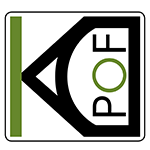



 KDPOF
KDPOF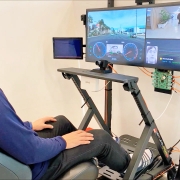



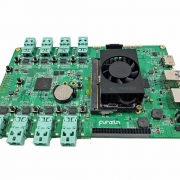 Funzin
Funzin